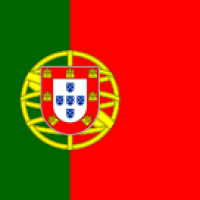Gouveia and Palma (2021) Affordability of energy for the general population and for specific groups in Portugal, EP-pedia, ENGAGER COST Action.
Context
Energy affordability is closely related to the population income levels and the energy services that can be afforded with said income, thus involving also the energy carriers’ prices. In 2019, the adjusted gross disposable income of Portuguese households per capita in purchasing power standard (PPS) was €19 569, below the EU average of €23 388, placing in the bottom half of the EU member states list (Eurostat, 2020a). In the same year, the country had a Gini index (which measures income distribution inequality) of 31.9%, above the EU average of 30.2 %. (Eurostat, 2020b). An index of 0 represents total equality, whereas 100% represents maximum inequality. Income distribution ratio is also a useful indicator to understand inequalities, namely concerning the purchasing power of the population. It is the ratio between the total income of the 20% of the population with the highest income and the 20 % of the population with the lowest income. Portugal has the eighth highest income distribution ratio in the EU, above the EU average (Eurostat, 2020c). Moreover, 17.2% of the population was at risk of poverty in 2019, also higher than the European rate (16.5%) (Eurostat, 2020d). As for energy prices, in the first half of 2020, natural gas and electricity prices for household consumers with all taxes and levies included were respectively the first and fourth highest for household consumers in the EU-27, in PPS, well above the EU average (Eurostat, 2020e; Eurostat, 2020f). The low incomes, coupled with high energy prices, results in a higher risk of significant energy poverty levels in the population.

Perspective on energy affordability measures in Portugal
Portugal's only policy measures that directly target energy poverty are the social electricity and natural gas tariffs. The electricity and gas tariff are an automatic social support consisting of a discount on the standard tariff for access to respectively the low voltage electricity networks and low-pressure natural gas for households. Around 800 000 households have this support (19% of all households). These households are identified automatically through the social welfare system (ADENE; 2019). The eligibility criteria for the electricity social tariff are: location exclusively being used for domestic use in permanent housing, with a contracted electrical power at a low voltage of 6.9 kVA or less, and receiving one of six different welfare support schemes. These schemes are: 1) solidarity supplement for the elderly; 2) social insertion income; 3) social unemployment allowance; 4) family allowance; 5) disability pension; 6) social pension of old age. However, even if a household does not receive any social support, it can benefit from this social rate if the household's total annual income is equal to or less than 5 808 €, plus 50% for each household member (up to a maximum of 10) who do not have any income. For the natural gas social tariff, the criteria are similar, with the household also having to be exclusively used for domestic use, having low-pressure gas, with an annual natural gas consumption of 500 m3 or less, and to be receiving one of the following supports from the social welfare system: 1) solidarity supplement for the elderly; 2) social insertion income; 3) social unemployment allowance; 4) family allowance (first step); 5) disability pension. Approved in November 2020, the Decree-law nr.100/2020 has extended the social energy tariffs for the unemployed and invalid pensioners. These tariffs improve energy affordability of financially vulnerable consumers, since they reduce the energy bill. Nevertheless, they do not tackle any of the causes of energy poverty, thus being short-term measures to a persistent problem.
In Portugal, generally there are no measures providing disconnection protection, except for extraordinary situations such as the COVID-19 pandemic, where disconnections were suspended. For the general population, the deadline to pay an energy bill, before the power is cut, is 10 business days counting from the date when the bill is delivered. For vulnerable consumers, selected according to the same criteria as in the social tariff, the deadline is extended to 20 business days. Unrelated to the COVID-19 pandemic, and on a more permanent basis, in November 2020, a new regulation was approved, introducing the reduction of the contracted power before disconnection, thus giving more time for the consumer to pay the debt. The government has recently reduced the VAT tax on electricity consumption from 23% to 13% for the first 100 kWh consumed, or the first 150kWh for large families (five or more persons). For the fixed component of the bill, related to the contracted power and gas volume, VAT tax was reduced from 23% to 6% in 2019, for power up to 3.45kVA and low-pressure consumptions up to 10 000m3.
ADENE. (2019). Pobreza Energética em Debate [Energy Poverty in Debate]. Agência para a Energia [Portuguese Energy Agency]. Available at: https://www.adene.pt/pobreza-energetica-em-debate/
Decree-law nr. 100/200 of 26 of November, from the Ministry of the Environment and Climatic action. Official Gazette nr. 231. Presidency of the Council of Ministers.
Eurostat (2020b). Gini coefficient of equivalised disposable income - EU-SILC survey. Database. Available at: https://appsso.eurostat.ec.europa.eu/nui/show.do?dataset=ilc_di12&lang=en
Eurostat. (2020a). Adjusted gross disposable income of households per capita in PPS. Database. Available at: https://ec.europa.eu/eurostat/databrowser/product/view/tec00113?lang=en
Eurostat. (2020c). Income distribution. Database. Available at: https://ec.europa.eu/eurostat/databrowser/product/view/sdg_10_41?lang=en
Eurostat. (2020d). At-risk-of-poverty rate. Database. Available at: https://ec.europa.eu/eurostat/databrowser/product/view/tespm010?lang=en
Eurostat. (2020e). Electricity prices for household consumers - bi-annual data (from 2007 onwards). Database. Available at: https://appsso.eurostat.ec.europa.eu/nui/show.do?dataset=nrg_pc_204&lang=en
Eurostat. (2020f). Gas prices for household consumers - bi-annual data (from 2007 onwards). Database. Available at: https://appsso.eurostat.ec.europa.eu/nui/show.do?dataset=nrg_pc_202&lang=en

